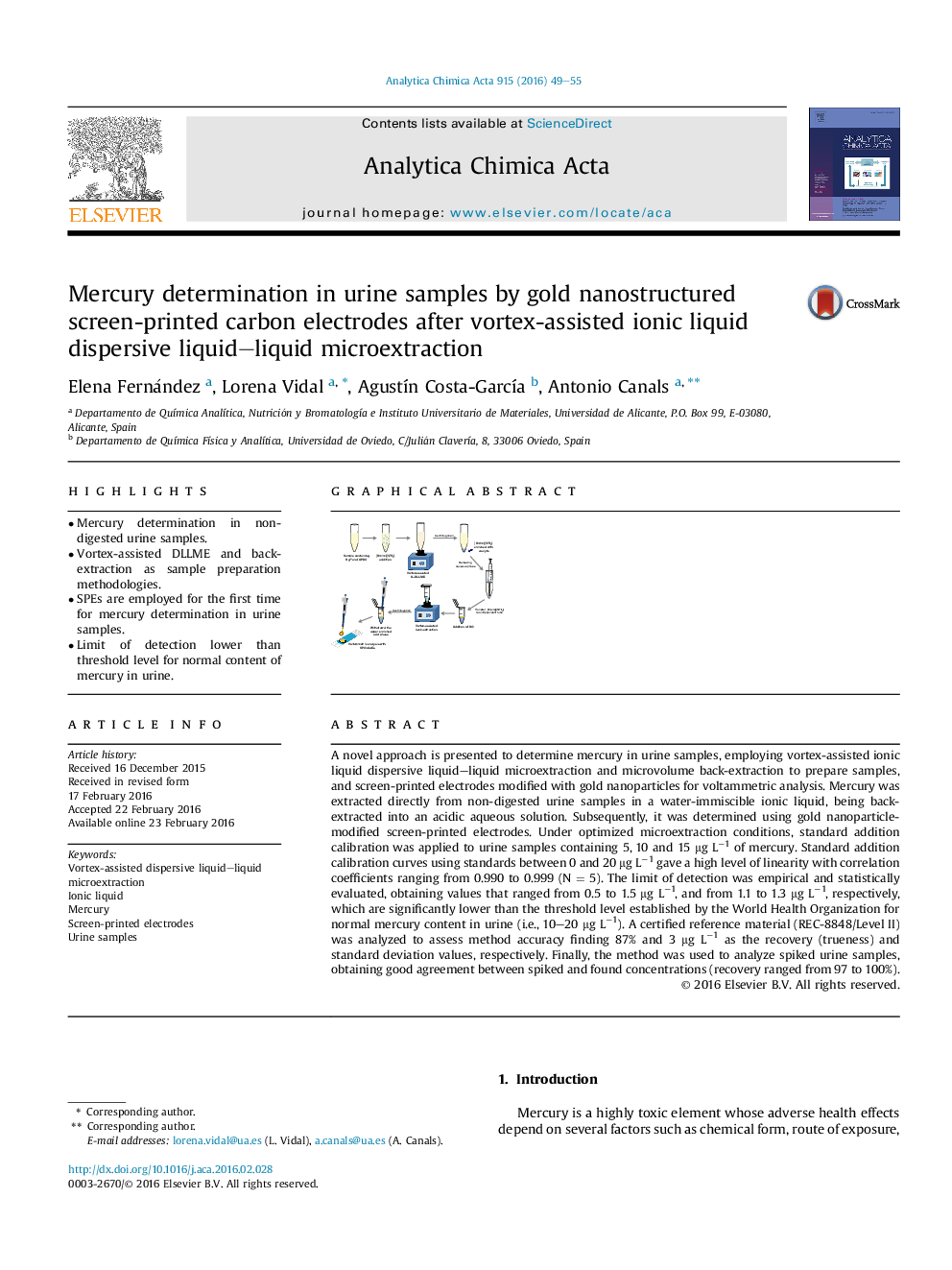| کد مقاله | کد نشریه | سال انتشار | مقاله انگلیسی | نسخه تمام متن |
|---|---|---|---|---|
| 1163023 | 1490917 | 2016 | 7 صفحه PDF | دانلود رایگان |
• Mercury determination in non-digested urine samples.
• Vortex-assisted DLLME and back-extraction as sample preparation methodologies.
• SPEs are employed for the first time for mercury determination in urine samples.
• Limit of detection lower than threshold level for normal content of mercury in urine.
A novel approach is presented to determine mercury in urine samples, employing vortex-assisted ionic liquid dispersive liquid–liquid microextraction and microvolume back-extraction to prepare samples, and screen-printed electrodes modified with gold nanoparticles for voltammetric analysis. Mercury was extracted directly from non-digested urine samples in a water-immiscible ionic liquid, being back-extracted into an acidic aqueous solution. Subsequently, it was determined using gold nanoparticle-modified screen-printed electrodes. Under optimized microextraction conditions, standard addition calibration was applied to urine samples containing 5, 10 and 15 μg L−1 of mercury. Standard addition calibration curves using standards between 0 and 20 μg L−1 gave a high level of linearity with correlation coefficients ranging from 0.990 to 0.999 (N = 5). The limit of detection was empirical and statistically evaluated, obtaining values that ranged from 0.5 to 1.5 μg L−1, and from 1.1 to 1.3 μg L−1, respectively, which are significantly lower than the threshold level established by the World Health Organization for normal mercury content in urine (i.e., 10–20 μg L−1). A certified reference material (REC-8848/Level II) was analyzed to assess method accuracy finding 87% and 3 μg L−1 as the recovery (trueness) and standard deviation values, respectively. Finally, the method was used to analyze spiked urine samples, obtaining good agreement between spiked and found concentrations (recovery ranged from 97 to 100%).
Figure optionsDownload as PowerPoint slide
Journal: Analytica Chimica Acta - Volume 915, 7 April 2016, Pages 49–55
